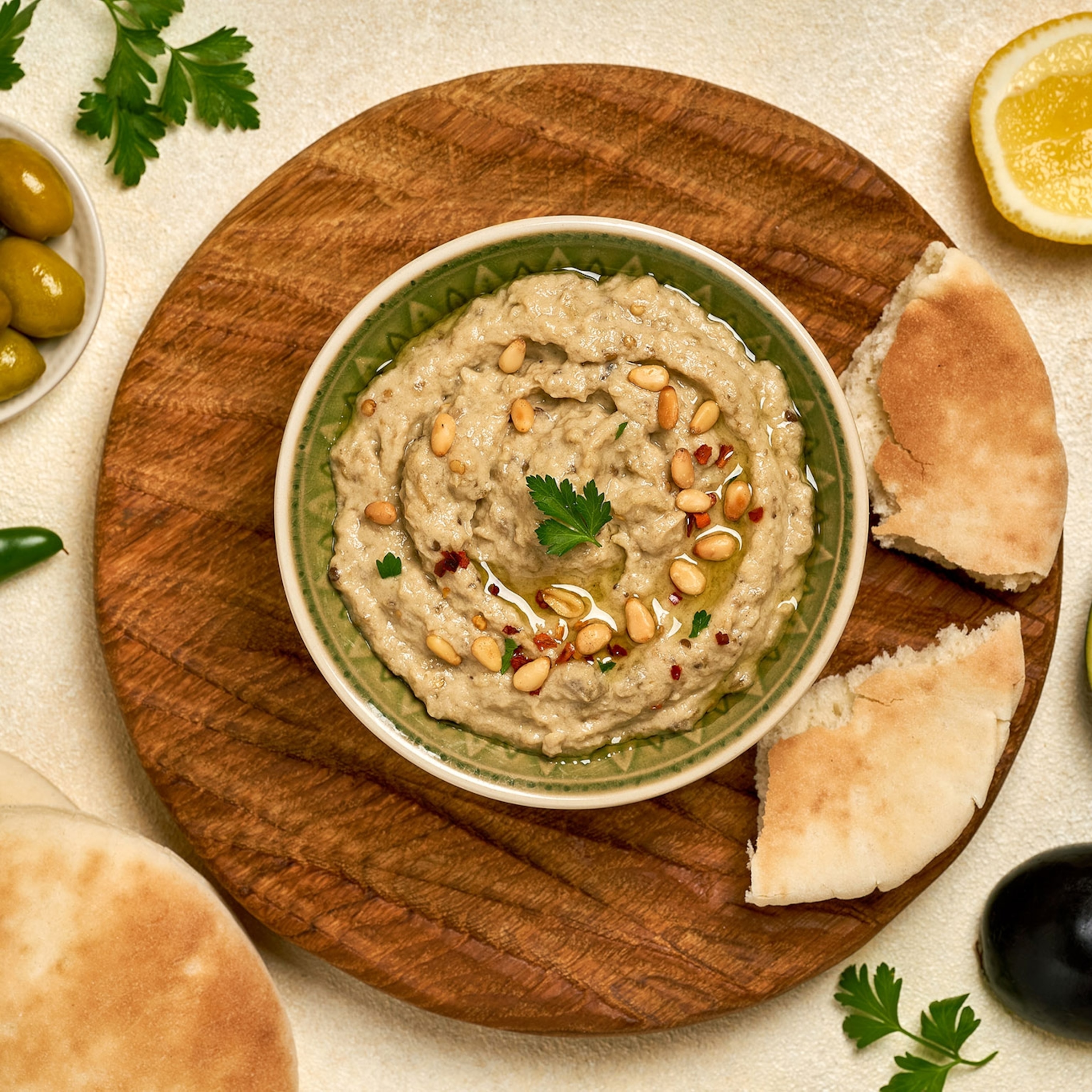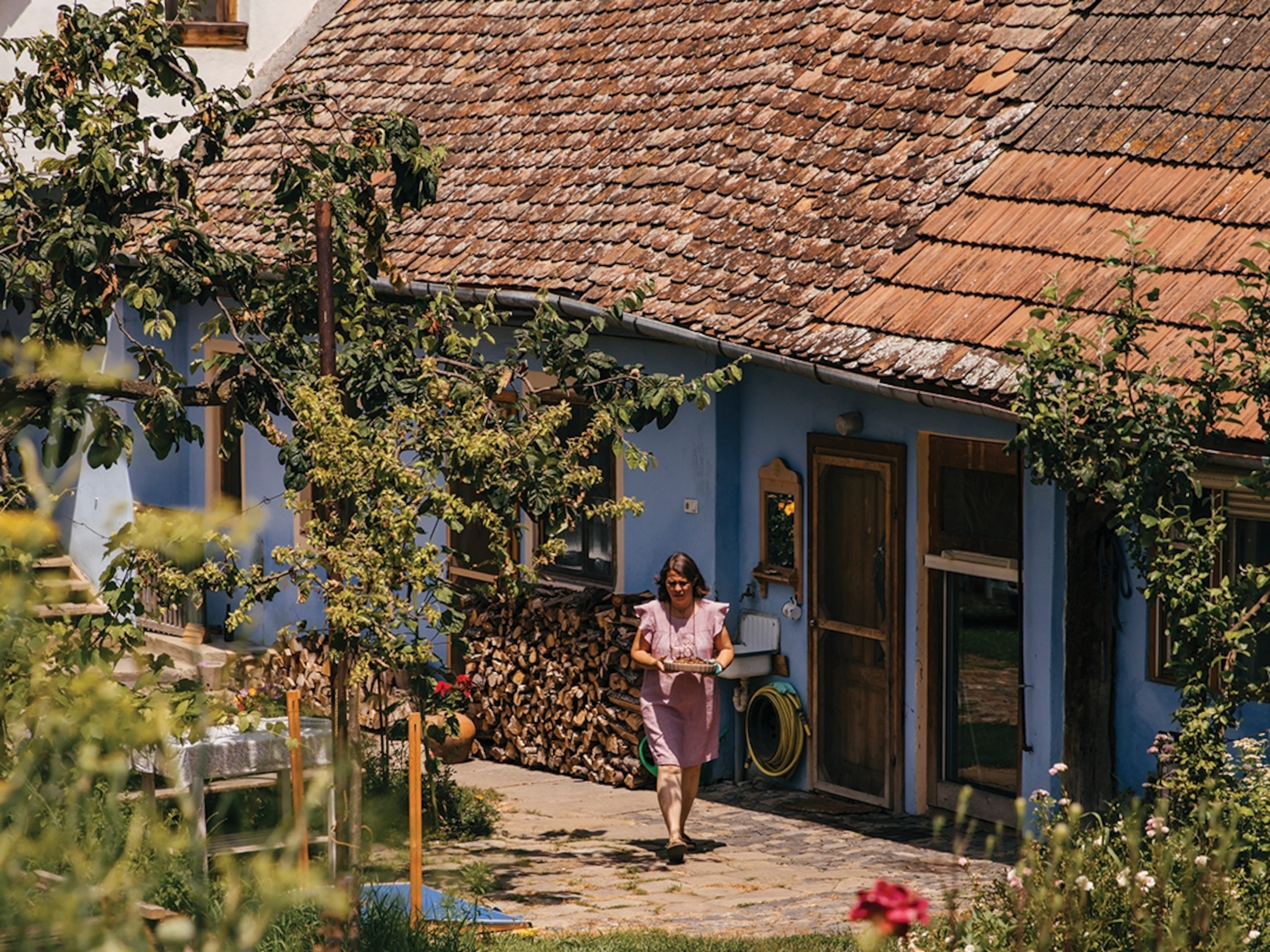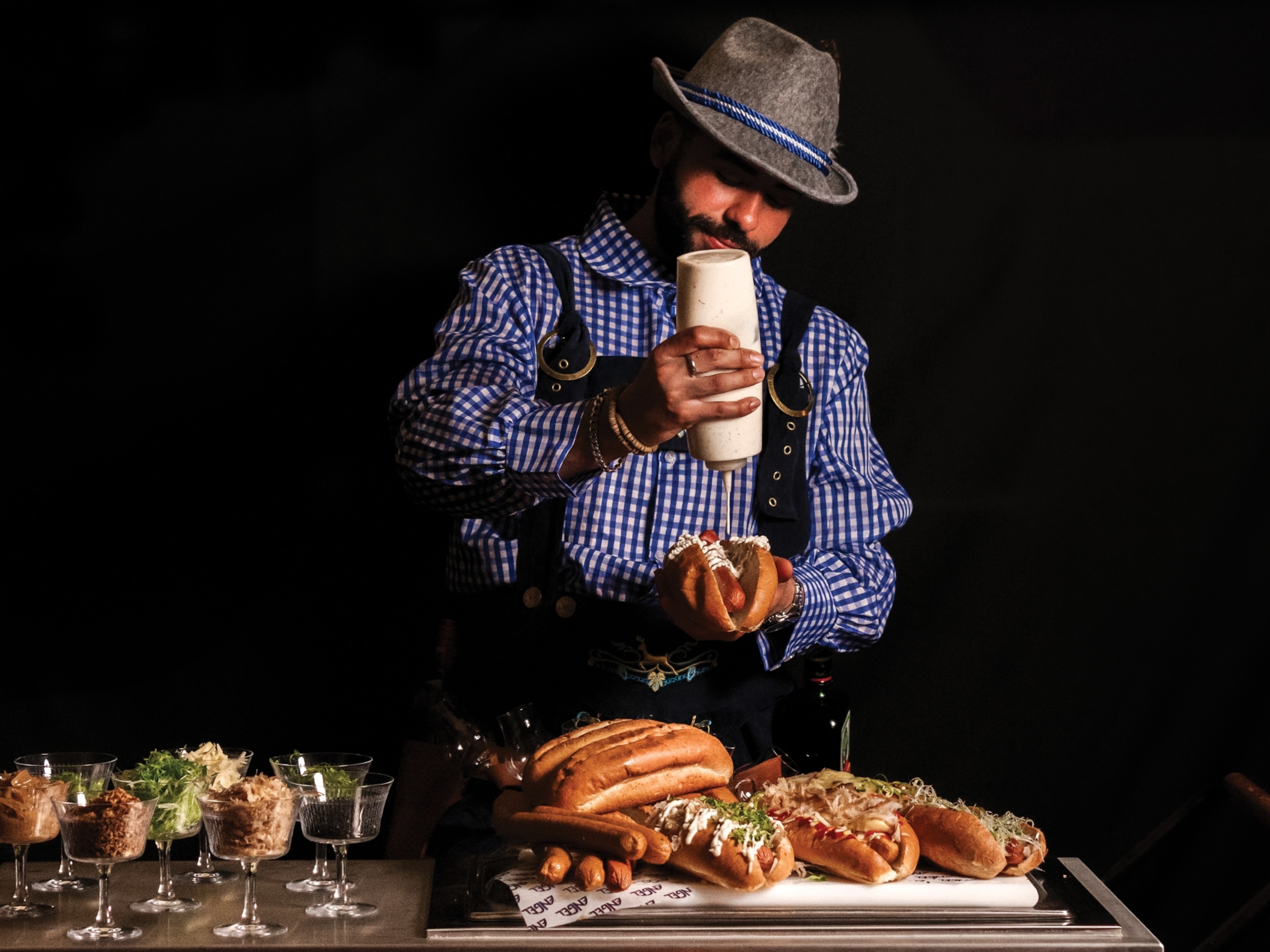Sharing culinary traditions in the orchard-filled highlands of Jordan
In the rural reaches of northern Jordan, local dishes are replete with produce from orchards, olive groves and kitchen gardens strung with vines.
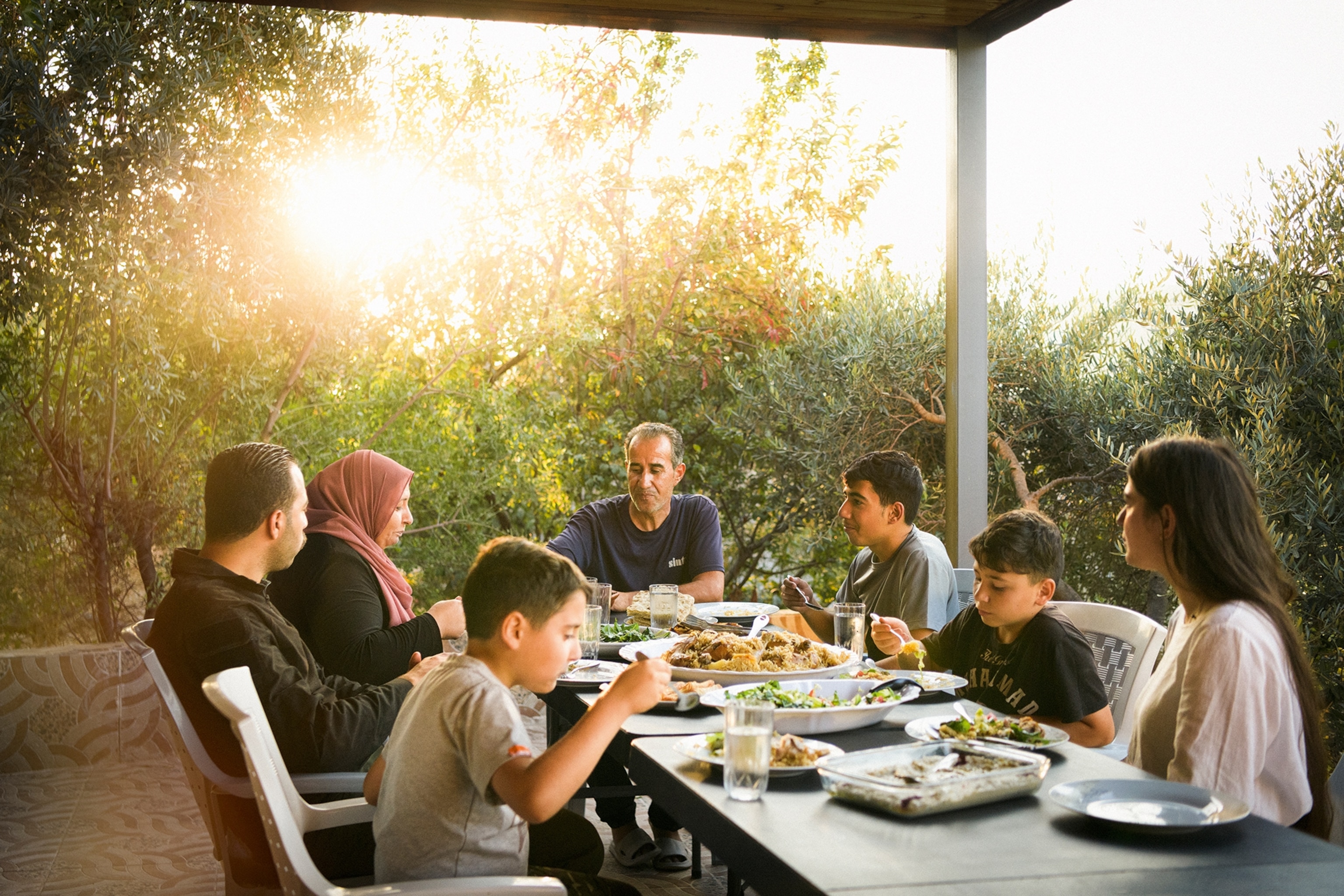
“Figs! You must try some Jordanian figs!” says Eisa, slapping his hands on his thighs. “Yalla, yalla!” His son, Yaman, appears from around the corner with a wicker basket, gesturing for me to follow him. We leave the courtyard of their family home, walking under a cloud of crimson pomegranates hanging above the front gate. In the garden, I’m greeted with a sweeping view of the 2.5-acre estate where figs, pomegranates, olives, plums, apricots and lemons grow against a backdrop of seemingly endless valleys and woodland.
All my senses are singing: golden sunlight dapples the ground under the vast canopy; dried leaves crackle beneath our feet with every step; and the heady scent of fig hangs in the air, which rings with the sound of birdsong and the afternoon’s adhan (the Islamic call to prayer).
Just then, Eisa begins to climb a tree, wrestling its unruly branches in a bid to reach a pair of bulbous, deep-purple figs at the very top. He hands me one that’s soft and has burst at the crown. “That’s when you know it’s perfectly ripe,” he explains. I slurp through the first bite; it’s at once sweet, fresh and juicy, and like no fig I’ve ever tried.
The orchard in Eisa’s back garden is one of many in Ajloun, a mountainous area of northern Jordan that abounds with olive groves and thick forests and is home to the majestic hilltop Ajloun Castle. In the region’s hinterland, between the villages of Orjan and Rasoun, stands the Dweekat family’s house. Here, Eisa — owner of tour operator Hike Jordan and co-founder of long-distance hiking route the Jordan Trail — lives with his wife Eman and their four children, Yaman, Yara, Samer and Tamer.

This nickname slowly manifested itself as we made the 90-minute drive north from the capital, Amman, earlier this morning. With each mile that took us closer, the landscape became progressively greener, the valleys deeper and the juniper and olive trees more abundant.
Here, particularly in Eisa’s neighbourhood, life moves at a gentle pace. It’s the kind of place where old men while away sunny afternoons under the canopy of a pine tree, prayer beads in one hand and a freshly picked orange in the other; a place where carpets are hung to air from balconies and laundry is strung out to dry on vine-webbed terraces; a place where cats seemingly outnumber people.
It’s also the sort of village where, should a local hear you’re a foreigner, they’ll immediately invite you in for coffee and food — invitations I politely decline, as I already have plans for a traditional Jordanian feast with the Dweekat family. But before we get started, we need to swing by the local market to pick up some more ingredients.
“The south and east of Jordan are mostly Bedouin, but here in the north, the majority of people are farmers,” Eisa tells me as we drive further into the centre of Rasoun, the village where he grew up. “It’s changed a lot since my childhood,” he adds. “Electricity only came here in 1986 or 1987, and shortly after came piped water. Before that, people would have to go and collect water from the spring.”


Along the gravel road, we pass small billboards featuring the Jordanian Royal Family, and people selling fruit and vegetables out of worn-out pick-up trucks. The air, once again, is full of fig, the signature scent in this part of Jordan. All is still and quiet, except for a small group of boys playing football and the distant clinking and clanking of pans from wide-open kitchen windows.
“Most mornings at this time of year, you’ll see more than 100 farm trucks coming to the area to pick figs and pomegranates and take them to the cities to sell,” Eisa tells me, pointing towards the lush valley from the car window.
Ajloun owes its sprawling green landscape to the generous amount of rainfall it receives — significantly more than the rest of Jordan. It appears to be laden with natural springs, and Eisa tells me that whenever I see one, there’s bound to be a pomegranate or fig tree nearby. Most of the produce consumed here in Ajloun — the likes of tomatoes, potatoes and lemons, as well as greens such as farfahina (purslane) and mulukhiyah (jute mallow) leaves — is grown in the Jordan Valley, about an hour’s drive away.
Eisa and I spend half an hour gathering ingredients for the upcoming meal. Our first stop is a small convenience store in Rasoun, run by 70-year-old Abu Mohammed, where we stock up on salt, rice and sunflower oil. We then head to the centre of Orjan — a much larger village, with around 10,000 residents — to buy a handful of lemons and guavas from a small fruit and vegetable stall before heading back home.
“In these villages of northern Jordan, people are very friendly. When we introduce local families to hiking groups, they love to showcase Jordanian culture and to learn about others from around the world,” Eisa says, waving every few minutes from the car window to people he knows.
As we drive, he points out a solitary olive tree that dates back to Roman times. “We sometimes invite tourists to assist in picking olives — a way of helping the community,” he says. The region is celebrated for having the best olive oil in the country, he tells me, adding that his family make their own using the trees in their garden.
“You should come back to Jordan again soon,” he says. “With more time, I can show you how the olive picking and pressing process works.”
Cooking up a feast
It’s late afternoon by the time we get back to the house, and Eman is waiting for us in the kitchen. Eisa’s wife of 18 years is a teacher who specialises in psychology and cooks all the meals for the family and their guests. Today, we’re making maqluba (meaning ‘upside down’ in Arabic), a beloved Levant dish of chicken or lamb with rice and fried vegetables such as aubergine, potato and onion.
First, we boil the organic chicken, while Eman regales me with stories of her “legendary cooking”, as her husband calls it.“Feeding people makes me happy,” she says. “My mum was the one who taught me how to cook, and then it was just a matter of learning from my mistakes.”
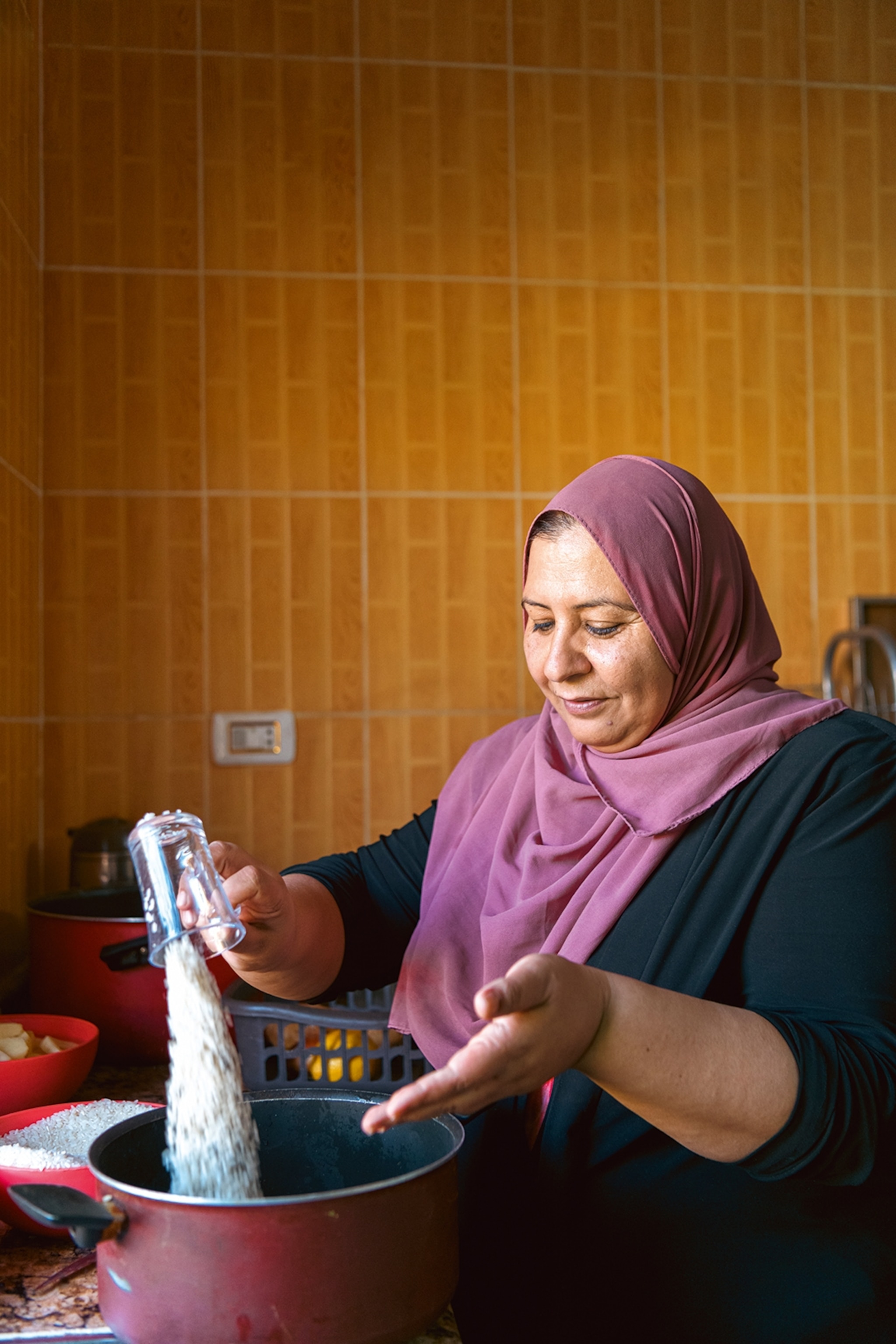
Eman’s kitchen is small and simple, with a barred window that looks out onto the orchard. Her antique-style wooden cupboards have handles in the shape of tiny knives, forks and spoons, and there’s a statement sky-blue spice rack in the corner, laden with Middle Eastern favourites including ginger, sumac, cumin and baharat, a blend typically made with black pepper, cardamom, cloves, cumin, nutmeg, coriander and paprika.
“Baharat is the most important spice; I use it in everything”, she tells me. “And coriander. I use it in yalanji [stuffed vine leaves], salads… everything! I grow my own coriander in spring, and I also make fig and apricot jams around now [late September], when the fruits in the garden are at their sweetest.”
Eman boils the chicken in a heady stock of cinnamon, baharat, saffron and a spoonful of mixed dried flowers. I ask her how often she cooks maqluba. “Too many times,” she says chortling, rolling her eyes. Mansaf (lamb cooked in fermented yoghurt) may be Jordan’s national dish, but maqluba is made more frequently, as chicken tends to be much cheaper than lamb. It’s also a go-to family meal on Fridays, the Islamic holy day. Palestine, Syria and Lebanon each have their own variation of maqluba, with the chicken sometimes substituted for beef or lamb.
When it’s time to fry the onions, potatoes and aubergines, Eman explains that every family takes a different approach to the a dining table in the courtyard. It’s a shady, breezy, peaceful refuge of rug-draped sofas, pots of succulents and that never-ending view of verdant wooded hills and valleys.
We’re joined by Eisa’s cousin, Laith, a local policeman, and Ra’ed, my guide, who’s been showing me around Jordan for the past week. One by one, everyone takes their seat — everyone, that is, except Yara, who’s busy studying for school exams. The next few minutes consist of arms crisscrossing over the table, knives and forks clattering on plates and chatter pinballing between Arabic and English. The conversation takes in such topics as the boggling variety of accents found across the Middle East, what the kids want to do when they grow up and how I should move to Ajloun and settle down with a Jordanian boy.
By now, it’s early evening, and the valley backdrop reminds me of a Monet painting — the sky a canvas of cerulean blue, the foreground stippled with oak trees and olive groves in earthy shades. The table, meanwhile, is a riot of colour. Eman serves me three gargantuan spoonfuls of maqluba, two musakhan rolls, jarjeer salad and taboon bread. The maqluba, a golden mix of chicken and warm spices, is offset perfectly by the tangy, sumac-heavy jarjeer salad. I tuck in, and whenever there’s an inch of empty space on my plate, Eman looks me dead in the eye and asks: “More?” And I oblige, every time.


“Farida, the kofte!” Eman squeals suddenly, her eyes widening. As the children run to grab the forgotten veal kofte from the oven, Eisa tells me more about his job. “In our culture, we don’t do hiking, camping — stuff like this,” he says. “This is still new for our country. It wasn’t easy to start, and people kept asking me why I wanted to walk.” But Eisa was passionate about showcasing the north of Jordan to the rest of the world and has now been a hiking guide for the past 23 years.
After dinner, we move to a courtyard sofa for some Turkish coffee and a plate of fresh fruit — a typical post-prandial Arab-style gathering, I’m told. Just before 8pm, trills of the day’s last call to prayer echo across the dark valley. It’s almost hypnotic, interwoven with the rising chirrup of crickets and howling of wolves in the distance.
That’s when I take a final sip of my coffee and thank Eisa for making me feel so welcome in his home. “You will always be welcome here,” he says with a smile. Then he hands me the very last fig on the plate. “You see, you’re part of our family now.”
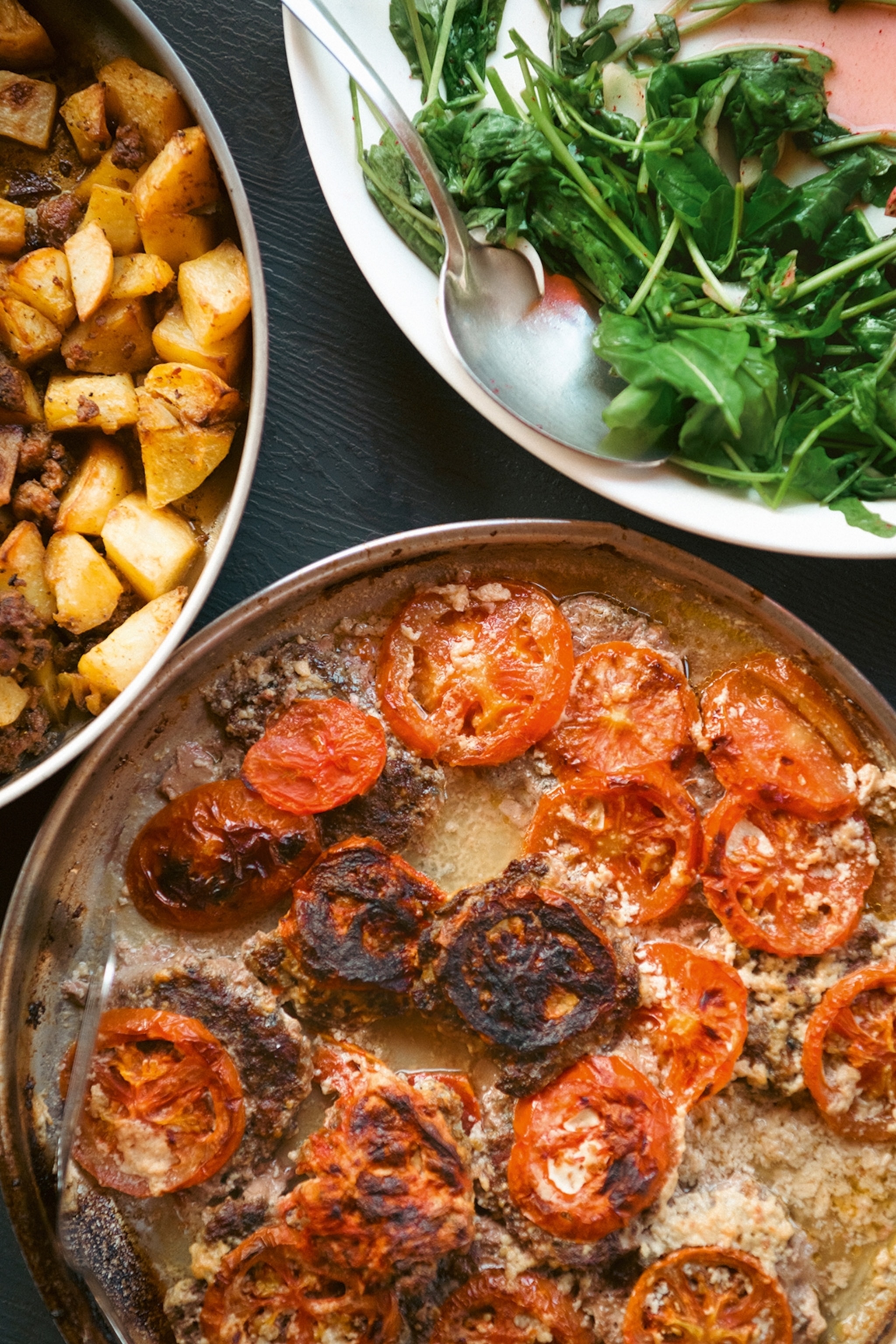
Recipe: Eman’s veal kofte
Eman’s veal kofte is best served as a side dish alongside maqluba, roast potatoes and a fresh green salad.
Serves: 4, as a side
Takes: 45 minutes
Ingredients
500g finely minced veal
1 medium white onion, finely chopped
1 tsp fresh parsley
1 ½ tsp ground coriander
1 ½ tsp ground cardamom
1 ½ tsp ground black pepper
1 tsp ground cinnamon
½ tsp ground cloves
½ tsp ground nutmeg
2 large tomatoes, sliced
olive oil, for drizzling
1 tsp tahini
Method
1. Heat oven to 180C, 160C fan, gas 4.
2. Combine the onion, parsley, spices and a pinch of salt in a bowl. Add the meat and a dash of olive oil and use your hands to mix well.
3. Divide the meat mixture into 12 equal portions. Shape each portion into a small disc about an inch thick, using your fingers to flatten them slightly.
4. Arrange the discs on a baking tray, then top each one with 4 or 5 slices of tomato. Drizzle with olive oil. Put the tray in the oven for 30 mins.
5. Remove the kofte from the oven, sprinkle with the tahini and put back in the oven for a further 3 minutes.
To subscribe to National Geographic Traveller (UK) magazine click here. (Available in select countries only).

